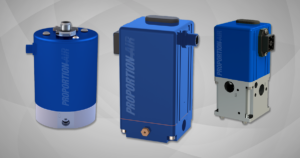Microfluidic Applications and Real-World Consumer Benefits
Do a quick web search for “microfluidics” and you’ll find information from scientific journals and specialized organizations, all discussing in-depth microfluidic applications without much explanation on what the phrase entails. It’s a challenging concept to grasp, especially considering its real-world applications aren’t as visible as other methods of production.
To understand where microfluidics have been used and why its important, it’s crucial to gain a basic conceptual understanding of what it is. Microfluidics is the science of controlling and manipulating very small fluids, ranging in volume from microliters (10-6) to picoliters (10-12). The fluids are accurately controlled through a channel or networks of channels that have dimensions from tens to hundreds of micrometers.
Of course, one of the biggest benefits of microfluidics is the ability to control fluids in precise ways, allowing for accurate dispensing on a small, miniaturized scale. Perhaps the best example of this is in microfluidics’ most commercial application, inkjet printers. The idea behind inkjet printers – dispensing tiny droplets of ink onto a piece of paper – is a perfect microfluidic application, as it requires fine control of the ink within the cartridges. Consider printing a photo with an inkjet printer – without the ability to accurately drop ink onto the paper in tiny portions, that photo would look splotchy and have inaccurate color reproduction. Because of its perfected use of microfluidics, inkjet printers have become the most popular form of printer for consumers.
But printers aren’t the only way the average person might see microfluidic applications change their lives. In molecular biology, microfluidics are being used on biochips to simulate laboratory functions on a tiny scale. By controlling the storage and transportation of fluids on these chips, microfluidics keep these biochips functioning, enabling them to create simulations through chemical reactions. The public-facing result is one of immense proportions, aiding in the detection of diseases and further understanding of chemicals, cells, and much more.
Those interested in learning about more use cases for microfluidics can check out this page on our website, where we detail microfluidic applications we’ve seen that pair microfluidics and our products together.

 April Newsletter: Pneumatic Education
April Newsletter: Pneumatic Education  We’ve got the blues – and it’s a good thing
We’ve got the blues – and it’s a good thing